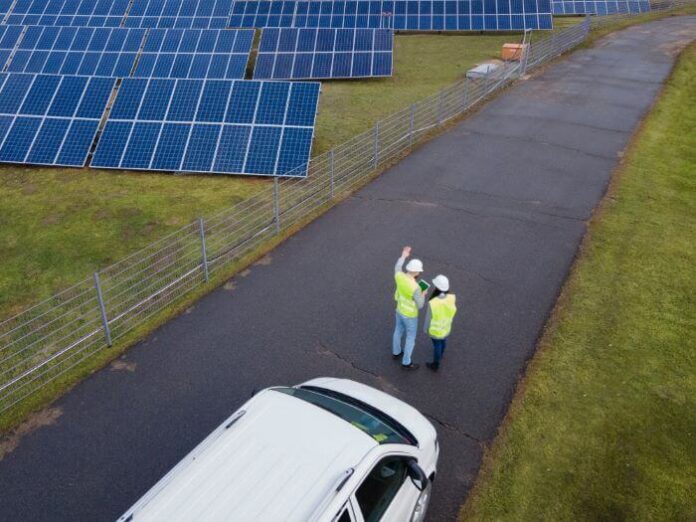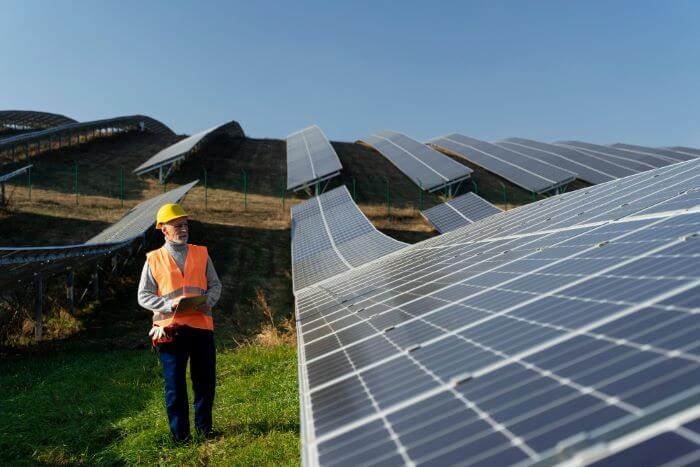Have you ever stumbled upon the term ‘Solar Panel TEAS Passage’ and wondered what it’s all about? Well, you are not alone! This topic has sparked the curiosity of many, and for good reasons. In this article, we are going to unravel the mystery behind this intriguing subject.
The Test of Essential Academic Skills (TEAS) is an exam that many students encounter. Among its varied content, the Solar Panel TEAS Passage stands out as a common and significant area.
It’s not just about testing your knowledge; it’s about understanding a technology that’s shaping our future. So, if you’re eager to learn more about this fascinating topic, keep reading – there’s a lot to discover!
What Exactly is the Solar Panel TEAS Passage?
So, what is the Solar Panel TEAS Passage? In simple terms, it’s a segment of the TEAS exam focusing on solar panels – their history, usage, and significance, particularly in the context of the White House. It’s a test of your ability to comprehend and interpret information regarding solar energy and its evolution in American history.
But why solar panels, you ask? Solar energy is rapidly becoming a frontline warrior in our battle against climate change. The passage in the TEAS test covers the fluctuating history of solar panels in the White House, reflecting the varying presidential philosophies on energy use.
It’s a concise yet informative segment that challenges students to grasp the intricacies of solar energy benefits and the political and historical contexts of its usage.
History of Solar Panels on the White House
Let’s take a step back in time. The story of solar panels at the White House is a fascinating one. It began in 1979 when President Jimmy Carter, a strong advocate for renewable energy, installed 32 solar panels to heat water. These panels were a bold statement about the potential of solar energy and a practical step towards energy conservation.
Fast forward to 1986, and the narrative took a turn. President Ronald Reagan, a critic of solar energy, had the panels removed. This act was seen by many as a step back in the country’s energy progress.
However, the story doesn’t end there. The panels found a new home at Unity College in Maine, continuing their legacy in a different setting.
In 2002, due to a renewed commitment to sustainability, new solar panels were installed on the White House grounds. This back-and-forth journey of solar panels is not just about technology; it’s a reflection of changing political and environmental attitudes over the decades.
A Closer Look at Solar Panels – What They Are and How They Work
Now that we have made some progress in letting you know what solar panel TEAS passage is, let’s take things a step further by taking an even closer look at solar panels. Yes, we need to understand what these panels are and how they work.
At their core, solar panels are devices that convert sunlight into electricity. They consist of solar cells made from semiconductor materials like silicon. When sunlight hits these cells, it triggers a movement of electrons, creating an electric current – this is how sunlight gets converted into electricity!
The efficiency of solar panels depends on the sunlight they receive. They perform best under direct sunlight but can still generate electricity on cloudy days. The evolution of these panels is remarkable.
From their early use in calculators and watches to becoming a mainstay in residential and commercial energy systems, solar panels have come a long way. Their operation is straightforward yet fascinating: the more sunlight they receive, the more energy they produce.
Some Benefits of Solar Panels
Let’s break down the benefits of solar panels, one shining point at a time:
Renewable and Clean: Solar panels harness energy from the sun, a vast and renewable resource. This means they don’t contribute to greenhouse gas emissions, making them a clean energy source.
Reduced Dependency on Fossil Fuels: By using solar panels, we can lessen our reliance on non-renewable energy sources, which are not only limited but also harmful to the environment.
Cost Savings: Solar energy can significantly reduce electricity bills. While there’s an upfront cost to installing solar panels, the long-term savings are substantial.
Low Maintenance: Once installed, solar panels require minimal upkeep. They need to be cleaned periodically, but beyond that, they’re pretty much set-and-forget.
Increases Property Value: Homes with solar panels often see an increase in property value, making it a smart investment.
The Current Solar Panels on the White House
The White House once again embraced solar energy under President Barack Obama’s administration in 2013. The current solar setup at the White House is nothing short of impressive.
With 980 panels adorning the West Wing and the colonnades, these modern solar arrays produce around 320 kilowatts of power, covering about 20% of the White House’s electricity needs. This not only represents a significant financial saving but also symbolizes the nation’s commitment to renewable energy.
These panels, crafted by SunPower, are designed to endure the harsh Washington D.C. weather, showcasing the durability and reliability of modern solar technology. Their maintenance and performance are overseen by the National Park Service, ensuring their optimal operation.
How Much Does It Cost to Have Solar Panels Installed?
The cost of solar panels has been a topic of much debate. However the cost of installing these panels varies a lot, depending on various factors such as the type of panels, size of the system, and installation costs. On average, a home solar panel system might set you back around $15,000.
However, this is a rapidly evolving field, and prices have been steadily decreasing. Moreover, various government incentives, including tax credits and rebates, can significantly offset the initial investment.
What is the Installation Process Like?
Installing solar panels is a process that requires precision and expertise. It typically involves mounting the panels on your roof, connecting them to an inverter, and then linking this setup to your home’s electrical system.
While it’s possible to install solar panels yourself, it’s usually best to enlist the services of a professional to ensure everything is done correctly and safely.
Does It Have Any Environmental Impact?
The environmental impact of solar panels is minimal, especially when compared to conventional energy sources. They don’t emit greenhouse gases or require water for operation, making them an environmentally friendly choice.
The biggest concern is the production and disposal of solar panels, but even these aspects are continually improving in terms of environmental impact.
Solar Panel TEAS Passage – Final Note
As we wrap up, it’s clear that the Solar Panel TEAS Passage is more than just a component of an academic test. It’s a window into the fascinating world of solar energy. It touches everywhere from its historical significance, technological evolution, and immense potential for our future.
So, whether you are a student preparing for the TEAS exam or just curious about solar panels, we hope this article has shed some light on this bright topic!
FAQs
How much electricity can solar panels generate?
The electricity output of solar panels varies based on several factors, such as the size and efficiency of the solar panel system, the geographical location, and the amount of sunlight received.
Typically, a residential solar panel system ranges from 4kW to 8kW and can generate about 16 to 32 kilowatt-hours (kWh) of electricity per day, depending on these factors. For instance, in areas with high sun exposure, a 6kW system might produce around 24 kWh on a sunny day, which is enough to power an average household’s daily energy usage.
Can I install solar panels myself?
Yes, it is possible to install solar panels yourself, but it requires a significant amount of technical knowledge and skill. DIY solar panel installation involves understanding electrical systems, safely working on your roof, and correctly connecting the solar panels to your home’s electrical grid.
However, many people opt for professional installation to ensure safety and efficiency. If you choose the DIY route, it’s crucial to thoroughly research and possibly consult with experts before attempting the installation.
If I’m interested in installing solar panels, what should I do first?
If you are considering installing solar panels, the first step is to conduct research and gather information:
- Assess Your Energy Needs: Look at your electricity bills to determine your energy usage and understand what size solar system would be suitable for your home.
- Check Your Home’s Suitability: Evaluate your home’s roof for space, strength, and sun exposure. South-facing roofs without shade are ideal.
- Research Local Installers: Find reputable solar installation companies in your area and get quotes. Check their credentials and reviews to be sure you are going with the best company.
- Understand Incentives: Research local, state, and federal incentives, tax credits, and rebates that can reduce the cost of solar panel installation.
- Get a Professional Assessment: A professional can provide an accurate estimate of the cost and size of the system needed, as well as handle permits and regulations.
Related Articles You Might Like:








